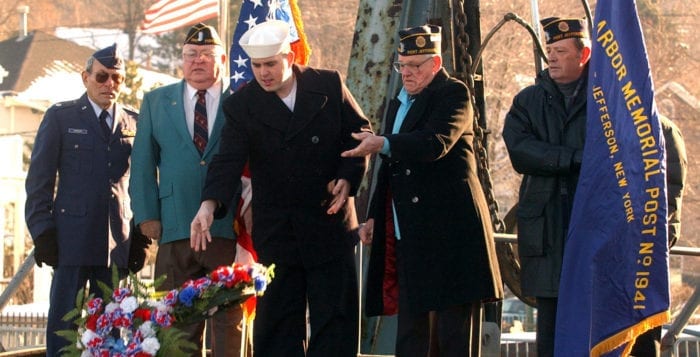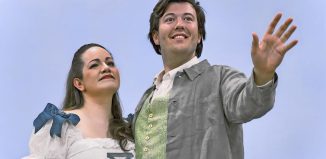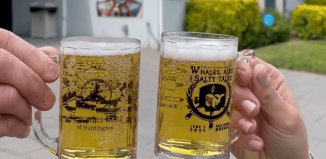Lessons of Pearl Harbor
By Rich Acritelli
“I fear all we have done is to awaken a sleeping giant and fill him with terrible resolve.”
Japanese Admiral Yamamoto Isoroku, the architect of the attacks on Pearl Harbor 75 years ago, supposedly uttered these words as he assessed the immediate aftermath of Dec. 7, 1941. Up until Japan attacked, most Americans still subscribed to the popular sentiment of remaining out of the conflict, inspired by the words of Charles Lindbergh — “America first.” The America First Committee openly resented any notion that the United States should prepare for war. Even the first peacetime draft conducted in 1940 that expanded the military forces received stiff anti-war congressional opposition. While German tanks easily invaded France and later pushed through the Soviet Union, officers like Dwight D. Eisenhower, Omar N. Bradley and George S. Patton still saw the cavalry play a major role within the mobility of the Army. All of this changed when Japanese fighter planes swarmed into Hawaii and attacked the air, naval and Army bases that manned the “jewel” of our forces in the Pacific Ocean.
When word of the attack spread to Washington, D.C., Secretary of State Cordell Hull was in the midst of negotiating with his Japanese counterpart. After a couple of choice words for the diplomat, the nation was rapidly placed on track for war. Within seconds, Americans were on lines blocks long to enter the service. President Franklin D. Roosevelt addressed the nation with his “Day of Infamy” speech that was adopted as a rallying cry by American citizens to defeat the Axis powers. Unlike the political gridlock seen today, Roosevelt’s words were accepted without reservation, and supporters and opponents of the president’s New Deal listened to the beloved leader. The “sleeping giant” of productivity, strength and endurance was awakened to defeat a global enemy. Prominent baseball players like Yogi Berra, Bob Feller, Ted Williams, Hank Greenberg and Yankee Manager Ralph Houk hung up their uniforms during the prime of their careers to support the war effort. By the end of 1942, the size of the U.S. armed forces had doubled from the previous year. The enthusiasm could be traced to a commitment to avenge Pearl Harbor and defeat Hitler and the Nazis.
Americans today do not realize how close the Allies came to losing the war. Although the U.S. government was fully committed to fighting and helping its allies, America had a steep learning curve in teaching its young men the ways of modern warfare. The Japanese crippled America’s naval forces and Hitler looked unstoppable in Europe, but Roosevelt promised armed forces would be fighting the enemy in the Pacific and in North Africa before the close of 1942. Americans were drafted so quickly into the military that there were not enough uniforms, weapons, tanks or trucks for them to utilize for their training. Longtime Wading River resident Michael O’Shea, who passed away in 2009, was a navigator in a B-17 Flying Fortress and experienced the earliest aspects of the war efforts.
The New York City kid watched Yankee games and attended Stuyvesant High School. Like other young men, O’Shea was horrified by the attack on Pearl Harbor and wanted to forgo his senior year to enter the military. His parents were adamant that he finish high school before enlisting. As a young recruit into the Army Air Force, O’Shea for a brief time was stationed in Atlantic City, N.J. He was not issued a uniform, did not have many knowledgeable instructors, and the lack of heat in the military housing made people sick. The local resident flew 24 combat missions and had the rare experience of being shot down twice over Europe. He was later imprisoned in Stalag Luft III, the same camp depicted in the film “The Great Escape.” In the spring of 1945, Patton’s Third Army liberated O’Shea. He was present to see the noted armored general speak to all of the freed Americans. O’Shea was a good friend to Rocky Point High School, where he was a proud representative of the “Greatest Generation” and spoke about his crusade against totalitarian powers.
It was 75 years ago that America was propelled into a war it did not choose, but the people worked together and completely sacrificed for the safety and security of a thankful nation. Citizens like O’Shea, without hesitation, risked their lives for the well-being of the country. On this Pearl Harbor anniversary, may we never forget those men and women who were lost and wounded in the defense of this nation and continue to do so today at home and abroad.
Joseph Lalota of the Rocky Point History Honor Society contributed to this story.
Rich Acritelli is a social studies teacher at Rocky Point High School and an adjunct professor of American history at Suffolk County Community College.







